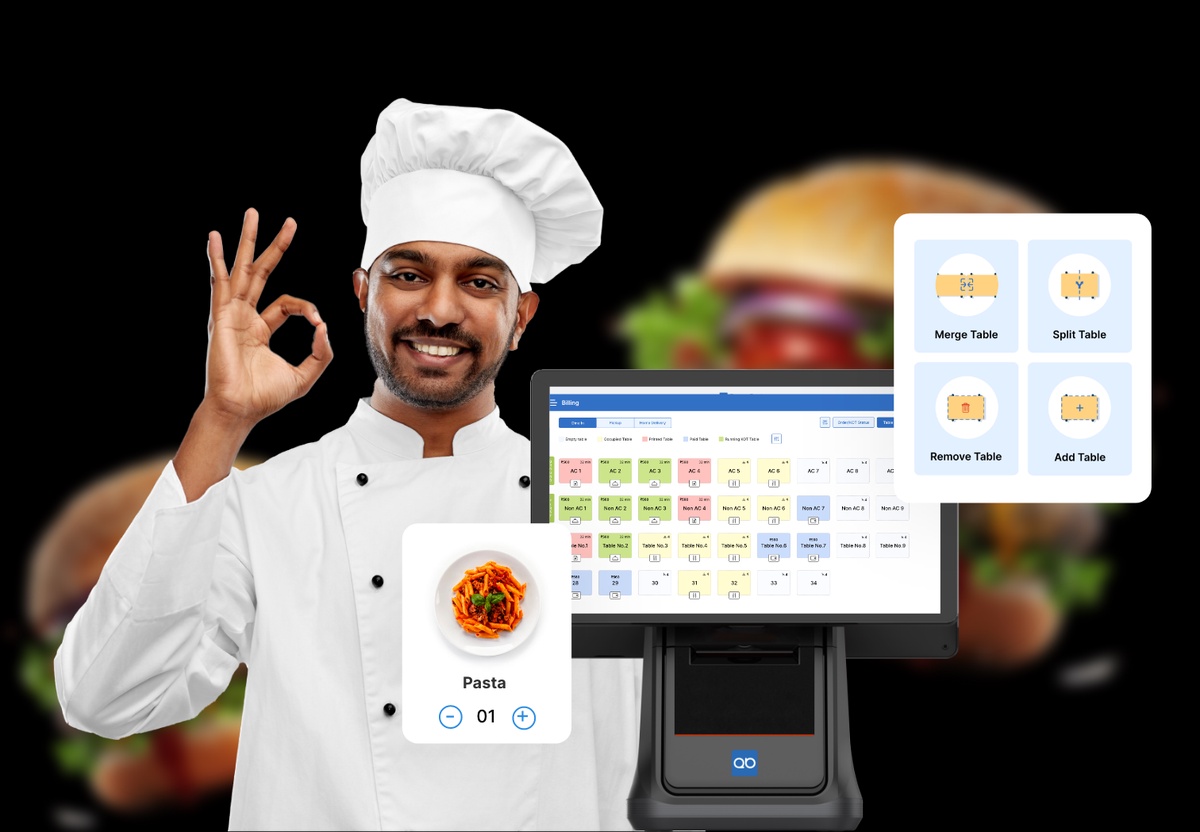In the dynamic world of hospitality, efficiency, accuracy, and customer satisfaction are paramount. The advent of restaurant billing software has revolutionized the way restaurants manage their operations, streamline billing processes, and enhance the overall dining experience. In this comprehensive guide, we will delve into the intricacies of restaurant billing software, exploring its features, benefits, and the transformative impact it has on modern restaurant management.
Understanding Restaurant Billing Software:
Restaurant billing software serves as a multifaceted solution designed to automate and optimize various aspects of the billing process in restaurants. From generating bills and processing payments to managing orders and analyzing sales data, restaurant billing software streamlines operations and empowers restaurant owners and managers to run their establishments more efficiently.
Key Components of Restaurant Billing Software:
-
Point of Sale (POS) Integration: Restaurant billing software often integrates seamlessly with POS systems, allowing servers to input orders directly into the system, generate bills, and process payments with ease. This integration eliminates the need for manual data entry, reduces errors, and speeds up the billing process.
-
Menu Management: Restaurant billing software enables restaurants to manage their menus digitally, making it easy to update prices, add or remove items, and customize offerings based on customer preferences. This flexibility allows restaurants to adapt quickly to changing market trends and seasonal variations.
-
Table Management: Effective table management is essential to maximizing seating capacity and minimizing wait times. Restaurant billing software provides features for managing table assignments, tracking table status, and optimizing seating arrangements to ensure a smooth and efficient dining experience for customers.
-
Inventory Control: Inventory management is critical to controlling costs and minimizing waste in the restaurant industry. Restaurant billing software includes inventory control features that track stock levels, monitor ingredient usage, and generate alerts for low inventory or overstock situations. This visibility enables restaurants to make informed purchasing decisions and reduce food costs.
-
Reporting and Analytics: Restaurant billing software offers robust reporting and analytics capabilities, allowing restaurants to track sales performance, analyze customer spending patterns, and identify opportunities for growth. By leveraging data-driven insights, restaurants can optimize their operations, improve profitability, and enhance the overall dining experience for customers.
Benefits of Restaurant Billing Software:
-
Increased Efficiency: Restaurant billing software streamlines billing processes, reduces manual errors, and accelerates transaction times, leading to faster table turnover and improved customer satisfaction.
-
Enhanced Accuracy: By automating billing processes and integrating with POS systems, restaurant billing software minimizes the risk of errors and discrepancies in bills, ensuring accurate transactions and accounting records.
-
Improved Customer Experience: A smooth and efficient billing process enhances the overall dining experience for customers, leaving a positive impression and increasing the likelihood of repeat business and positive reviews.
-
Cost Savings: Restaurant billing software helps control costs by optimizing inventory management, reducing waste, and identifying areas for cost-saving opportunities, ultimately improving profitability for restaurant owners.
-
Scalability: Restaurant billing software is scalable and adaptable to the needs of restaurants of all sizes, from small cafes to large chains. Whether opening new locations or expanding operations, restaurant owners can rely on billing software to support their growth and expansion efforts.
Choosing the Right Restaurant Billing Software:
When selecting restaurant billing software for your establishment, consider the following factors:
-
Features and Functionality: Assess the features and functionality offered by different billing software solutions, ensuring they align with your specific needs and requirements, such as menu management, table tracking, and reporting capabilities.
-
Integration Compatibility: Choose billing software that seamlessly integrates with your existing POS system, accounting software, and other business tools to ensure smooth data flow and interoperability.
-
User-Friendly Interface: Opt for billing software with an intuitive and user-friendly interface that is easy for staff to learn and use, minimizing training time and maximizing productivity.
-
Customer Support: Select a billing software provider that offers reliable customer support services, including technical assistance, training resources, and ongoing maintenance and updates.
-
Cost and Affordability: Consider the cost and affordability of different billing software solutions, taking into account upfront fees, subscription plans, and any additional costs for hardware, support, or customization.
Best Practices for Implementing Restaurant Billing Software:
-
Staff Training: Provide comprehensive training to staff members on how to use the new billing software effectively, ensuring they are familiar with key features, workflows, and troubleshooting procedures.
-
Data Migration: If transitioning from an existing billing system, ensure smooth data migration to the new software, including customer profiles, menu items, and pricing information, to avoid data loss or inconsistencies.
-
Testing and Optimization: Conduct thorough testing of the new billing software before full implementation, identifying any issues or discrepancies and working with the software provider to address them promptly. Continuously optimize system settings and configurations to align with your business needs.
-
Feedback and Adaptation: Solicit feedback from staff and customers regarding their experience with the new billing software, using their input to identify areas for improvement and make necessary adjustments to optimize system performance and user satisfaction.
Conclusion:
Restaurant billing software has emerged as a game-changer in the hospitality industry, empowering restaurants to streamline operations, enhance customer satisfaction, and drive business growth. By leveraging the power of automation, integration, and data-driven insights, restaurant owners and managers can optimize their billing processes, improve efficiency, and deliver exceptional dining experiences that keep customers coming back for more.


No comments yet